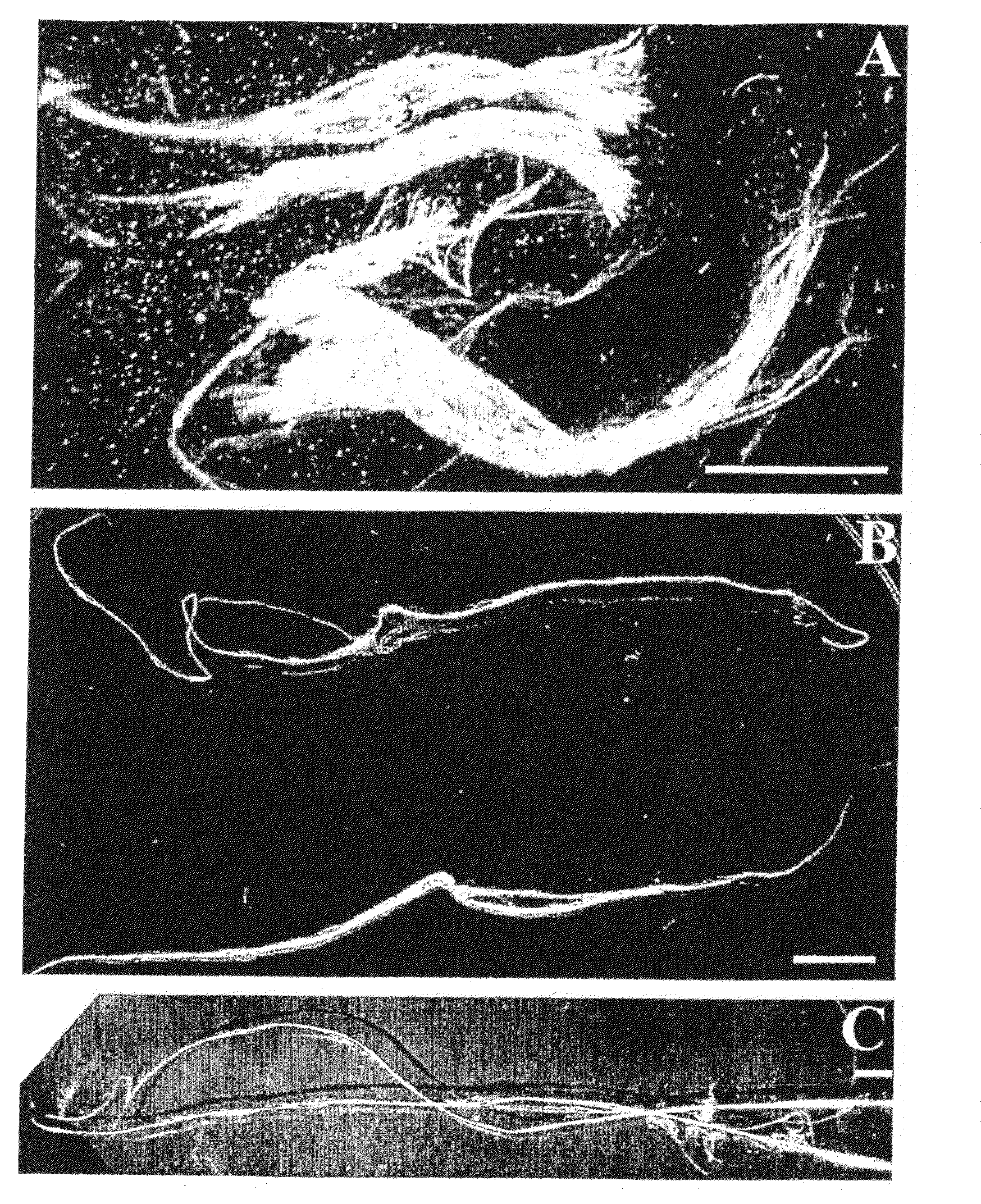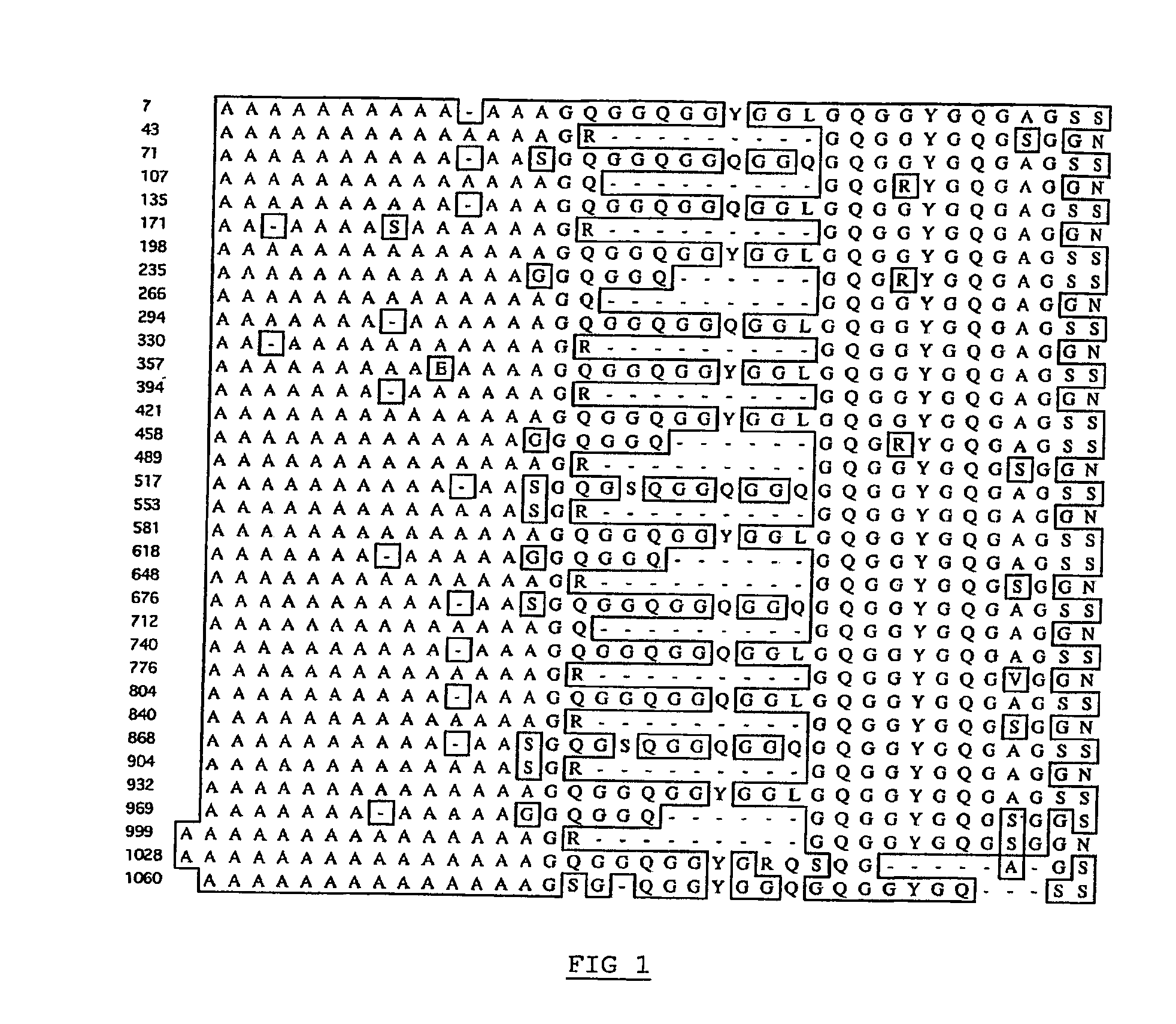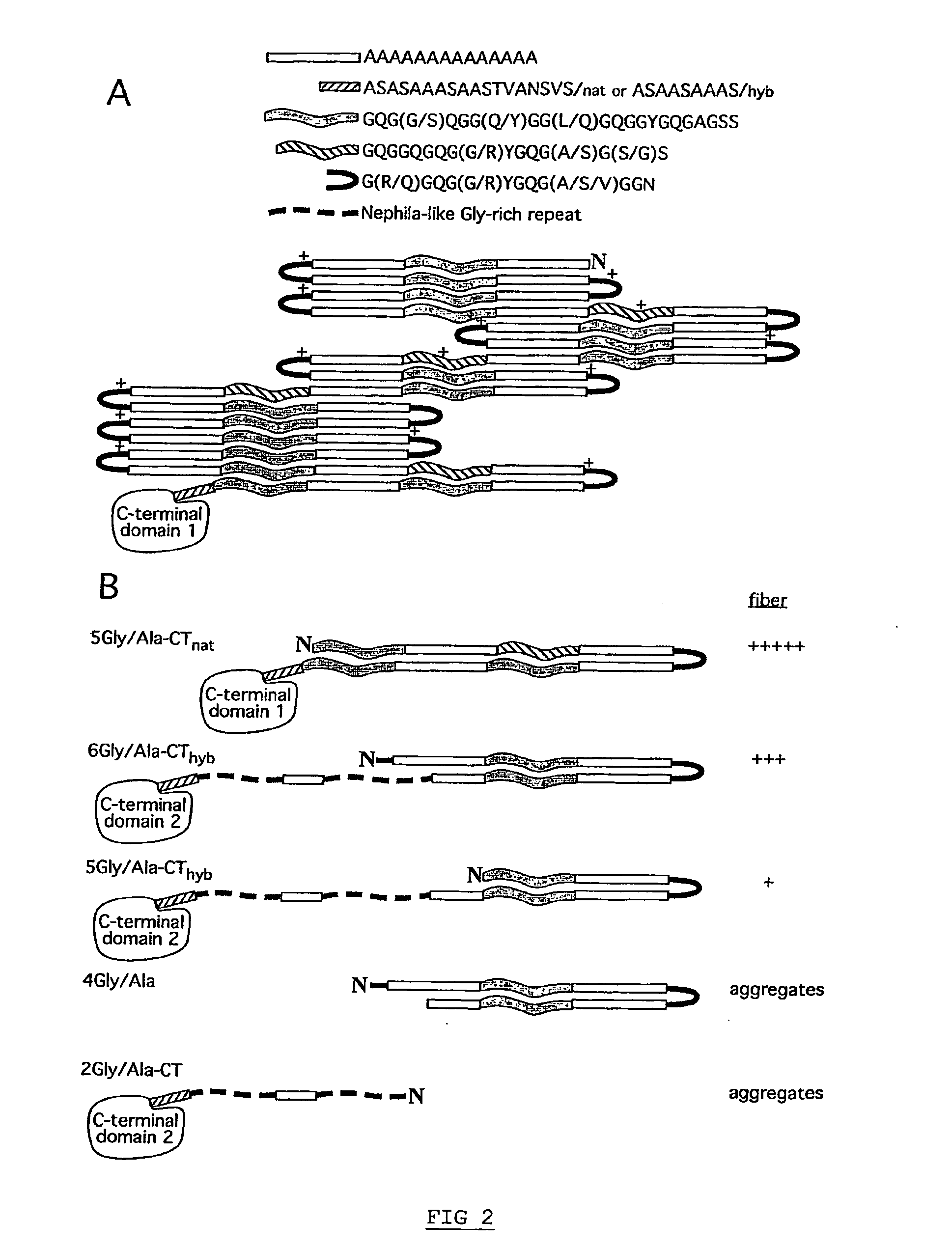Spider Silk Proteins and Methods for Producing Spider Silk Proteins
a technology of spider silk and proteins, which is applied in the field of recombinant production of spider silk proteins, can solve the problems of protein denaturation and protein denaturation risk reduction
- Summary
- Abstract
- Description
- Claims
- Application Information
AI Technical Summary
Benefits of technology
Problems solved by technology
Method used
Image
Examples
example 1
Cloning and Sequencing of Euprosthenops australis MaSp1 cDNA
[0106]The major ampullate glands from approximately 100 adult female Euprosthenops australis spiders, collected in South Africa, were used to construct a custom-made pDONR222-based CloneMiner cDNA library (Invitrogen, Paisley, UK). cDNA clones encoding the MaSp1 protein were obtained by screening the library with a cDNA probe encoding an alanine- and glycine-rich fragment originating from Euprosthenops spiders of unknown subspecies. Colony blotting and detection were performed with an ECL direct labelling and detection system (Amersham Biosciences, Uppsala, Sweden) according to the manufacturer's instruction.
[0107]One single clone was chosen for further characterization. To obtain full length sequence of the cDNA insert from this clone, nested deletions were made using the Erase-a-Base System (Promega, Southampton, UK), and sequencing was performed on a MegaBase 1000 instrument (Amersham Biosciences).
[0108]The resulting 3.8...
example 2
Sequence Analysis of the Repetitive Fragment of Euprosthenops australis MaSp1 Protein
[0109]The repetitive fragment of the Euprosthenops australis MaSp1 protein sequence of Example 1 (SEQ ID NO: 3) was further analyzed by alignment of the repetitive segments of the fragment, see FIG. 1. The alignment was carefully scrutinized and the following structural information was concluded.
[0110]The alanine-rich segments of the Euprosthenops australis MaSp1 protein are 13-15 amino acid residues long and consists of only alanine residues or all alanine residues but one residue, which is a serine, glutamate or glycine residue.
[0111]The repetitive fragment of the Euprosthenops australis MaSp1 protein further contains three related, but distinct, types of glycine-rich segments, c.f. FIG. 2A. Two of the glycine-rich segments differ almost only in length and occurrence; the most common glycine-rich segment contains 23 amino acid residues, while a less abundant variant contains 17 amino acid residues...
example 3
Prediction of Secondary and Tertiary Structure of the Repetitive Fragment of Euprosthenops australis MaSp1 Protein
[0114]Spidroin polypeptides in solution typically fold by formation of hairpin structures, which prefigures the anti-parallel β-sheet structure of the mature fiber. To discern possible folding patterns for the repetitive fragment (SEQ ID NO: 3) of the Euprosthenops australis MaSp1 protein of examples 1-2, protein regions that are compatible with formation of hairpin or turn structures were identified. The alanine-rich segments are unlikely candidates for turn formation since they are predicted to form helical structures, and more importantly, these segments are generally held to make up the β-sheets in the fiber.
[0115]Using a recently described algorithm for turn predictions (Fuchs, P F & Alix, A J, High accuracy prediction of beta-turns and their types using propensities and multiple alignments. Proteins 59, 828-839 (2005)), the shortest glycine-rich segments shows high...
PUM
| Property | Measurement | Unit |
|---|---|---|
| width | aaaaa | aaaaa |
| thickness | aaaaa | aaaaa |
| length | aaaaa | aaaaa |
Abstract
Description
Claims
Application Information
 Login to View More
Login to View More - R&D
- Intellectual Property
- Life Sciences
- Materials
- Tech Scout
- Unparalleled Data Quality
- Higher Quality Content
- 60% Fewer Hallucinations
Browse by: Latest US Patents, China's latest patents, Technical Efficacy Thesaurus, Application Domain, Technology Topic, Popular Technical Reports.
© 2025 PatSnap. All rights reserved.Legal|Privacy policy|Modern Slavery Act Transparency Statement|Sitemap|About US| Contact US: help@patsnap.com



